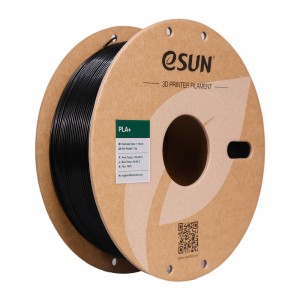eTPU-LW
eTPU-LW is the TPU material can be foamed during the printing process. By adjusting the printing temperature and speed, the foaming degree of the filament can be changed, so that the strength and density of the printed product can be adjusted in a personalized way. Foaming during the printing process makes the surface of the product has a fine frosted texture, and not easy to show the layer pattern. eTPU-LW has good flexibility, hard to tear, and has good resilience. As a flexible foam material, the printed object is soft and skin-friendly, suitable for flexible wearable products and COSPLAY model printing.
- * Description:
-
Description
eTPU-LW is the TPU material can be foamed during the printing process. By adjusting the printing temperature and speed, the foaming degree of the filament can be changed, so that the strength and density of the printed product can be adjusted in a personalized way. Foaming during the printing process makes the surface of the product has a fine frosted texture, and not easy to show the layer pattern. eTPU-LW has good flexibility, hard to tear, and has good resilience. As a flexible foam material, the printed object is soft and skin-friendly, suitable for flexible wearable products and COSPLAY model printing.
Sellingpoint
The maximum foam volume ratio is 172%
Free adjustment of strength and foaming rate
Delicate frosted textureGood interlayer adhesion
Excellent printability
Easy to paint
- * Application
- * Print model
-
- Disable retraction in the slicer software to prevent internal nozzle cavities that could cause clogging. Since lightweight TPU continues to foam inside the high-temperature nozzle chamber, retraction is ineffective. Stringing during idle moves is normal when printing, and you can use vase mode to reduce stringing effects on the model.
- Set the first layer speed to match the actual printing speed, at 100%. Disable the first layer and small-area slowdown function. Ensure the first layer extrusion rate matches the actual foaming extrusion rate (e.g., 58% at 260°C). If the adhesion to the build plate is too strong, adjust the bottom valve during printing.
- Pay attention to your printer’s maximum operating temperature. Most PTFE tube printers should not run above 250°C for extended periods, as this may cause clogs. For temperatures exceeding 250°C, use high-temperature machines with a metal hotend.
- Yellowing or nozzle sticking after high-temperature foaming is normal. Reducing the printing temperature can alleviate this issue.
- Tune the printer’s PID settings for stable temperature. Disable speed reduction, as large temperature shifts or speed changes can affect the foaming rate and lead to visible layer lines on the model surface.
- The foaming ratio is positively correlated with printing temperature—at a fixed printing speed, higher temperatures increase the foaming ratio, requiring a lower extrusion rate. Conversely, the foaming ratio is negatively correlated with printing speed—at a fixed temperature, higher printing speeds reduce the foaming ratio, requiring a higher extrusion rate. Adjust extrusion rate, temperature, and speed according to your specific printing conditions, and compare wall thickness in the model design to optimize settings.




















